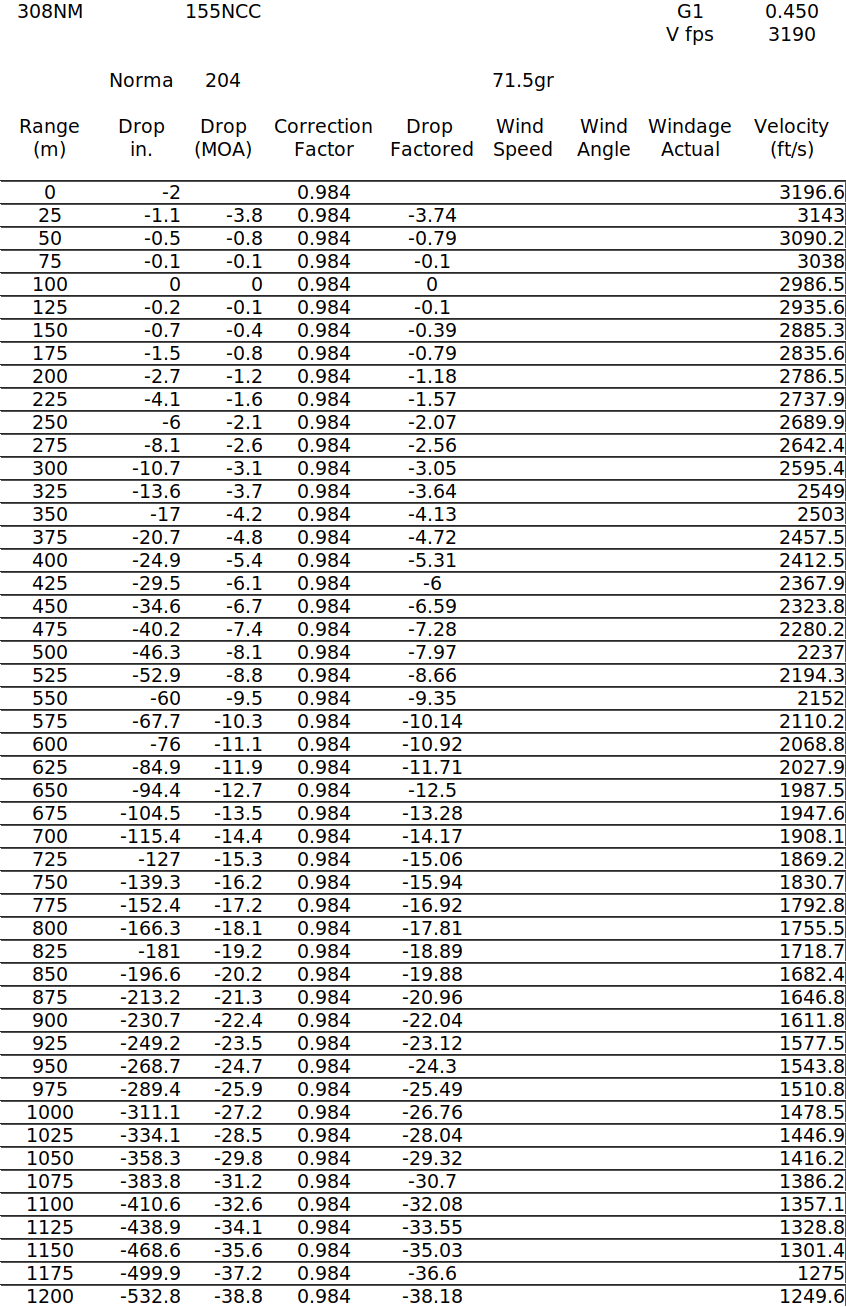Ysterhout Dot Net
To produce a drop chart, you will have already settled on a load.
I suggest printing a drop chart, as it is a great learning aid, with all the data available at a glance. You could skip straight into the ballistic calculator, but if you're new to this, you are likely to get confused and make changes to inputs that impact the outputs negatively.
For producing a drop chart, I can recommend the online calculator at JBM Ballistics.
Use that, or your preferred similar software to produce a chart of bullet drop to the maximum distance that Long Range shoots are held.
As a comparative exercise, use two or three different softare programs to produce the same drop chart, and notice how they differ from each other. JBM Ballistics seems to have more accurate math equations behind it.
Make sure to use the correct altitude and air pressure for your shooting location, as this greatly affects trajectory.
If you do not adjust the drop chart to factor in altitude induced air pressure change, you will be wasting time and ammo.
As an initial aid, copy / paste the chart output into a spreadsheet, and add blank columns - one for the correction factor and one for the corrected elevation adjustment.

Verify the drop chart.
To properly verify the bullet drop calculations, you should shoot to at least two widely seperate points. For example, if your drop chart is to one mile, shoot to 600 and 1400 yards, and if the predicted drop is true at those two points, it will be true at all ranges. Mathematically, multiple parabolic curves can fit two points. Practically, matching two points works for bullet drop when the launch angle is fixed.
It is important to actually go and shoot at that range, and not assume that because your load is perfect and your scope is perfect, that you can skip this. You will save yourself from much trial and error by taking one day of your time to get to a suitable range and perform this test.
Compare your actual elevation to what the drop chart says. When you are testing a few distances, it is helpful to have all the numbers visible at a glance on the paper, which is why I recommend you print a chart to begin with.
If the elevation you have to dial differs from the chart, make a note of the actual, and re-visit all the input parameters for the calculation.
Pay particular attention to use actual input data for
- air pressure at shooting altitude [ critical input parameter ]
- correct bullet BC, there should be no practical difference in result between a G1 or G7 number
If you can tweak the velocity number to true the curve at two distances, you have achieved success.
Tweaking the velocity number to true up at one distance does not mean it is true at another distance. As does tweaking the BC number to true at a particular distance. The BC number should not have to change in your calculator, unless the manufacturer has overstated their BC numbers, and you know what the actual BC is.
Tweak the velocity number till the drop chart matches your actual at a minimum of two points on the trajectory curve. Then the actual will hold true at all ranges. If you are in the situation where your tweaked number still fail to predict actual when you change the distance, there are some pointers for you on the Debugging page.
Changing the BC number to match the observed point of impact is going to give you a drop number for that range only, if the BC number you choose is not actual, when the range changes, the error margin is going to follow.
Physically verifying the drop chart cannot be done using ballistic software. Having an accurate, physically verified drop chart is the basis for moving on to field ballistic calculators.



